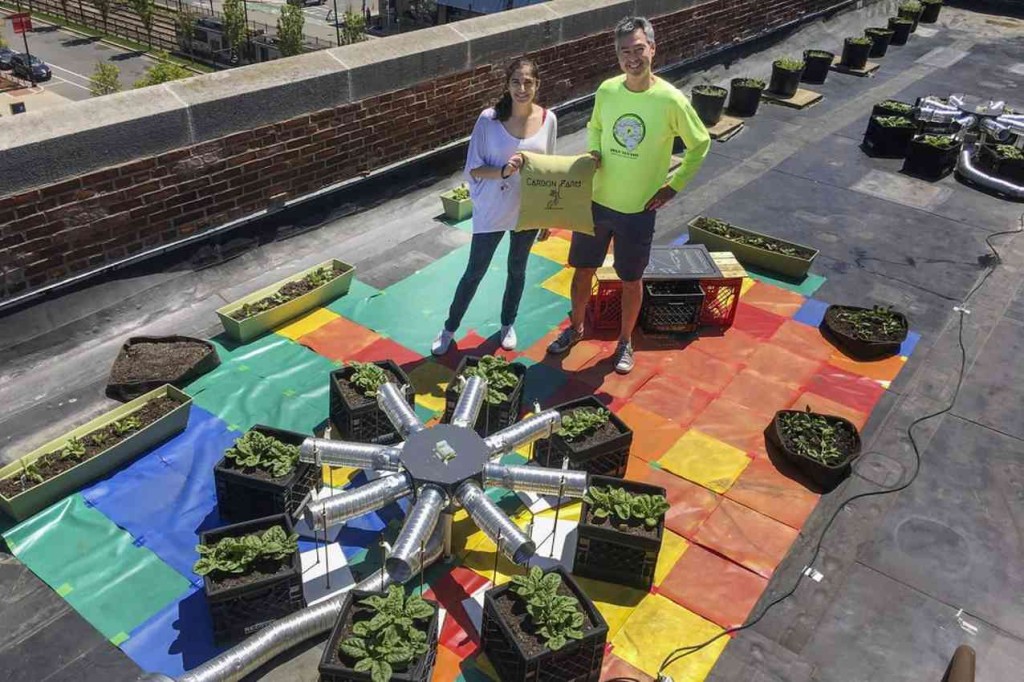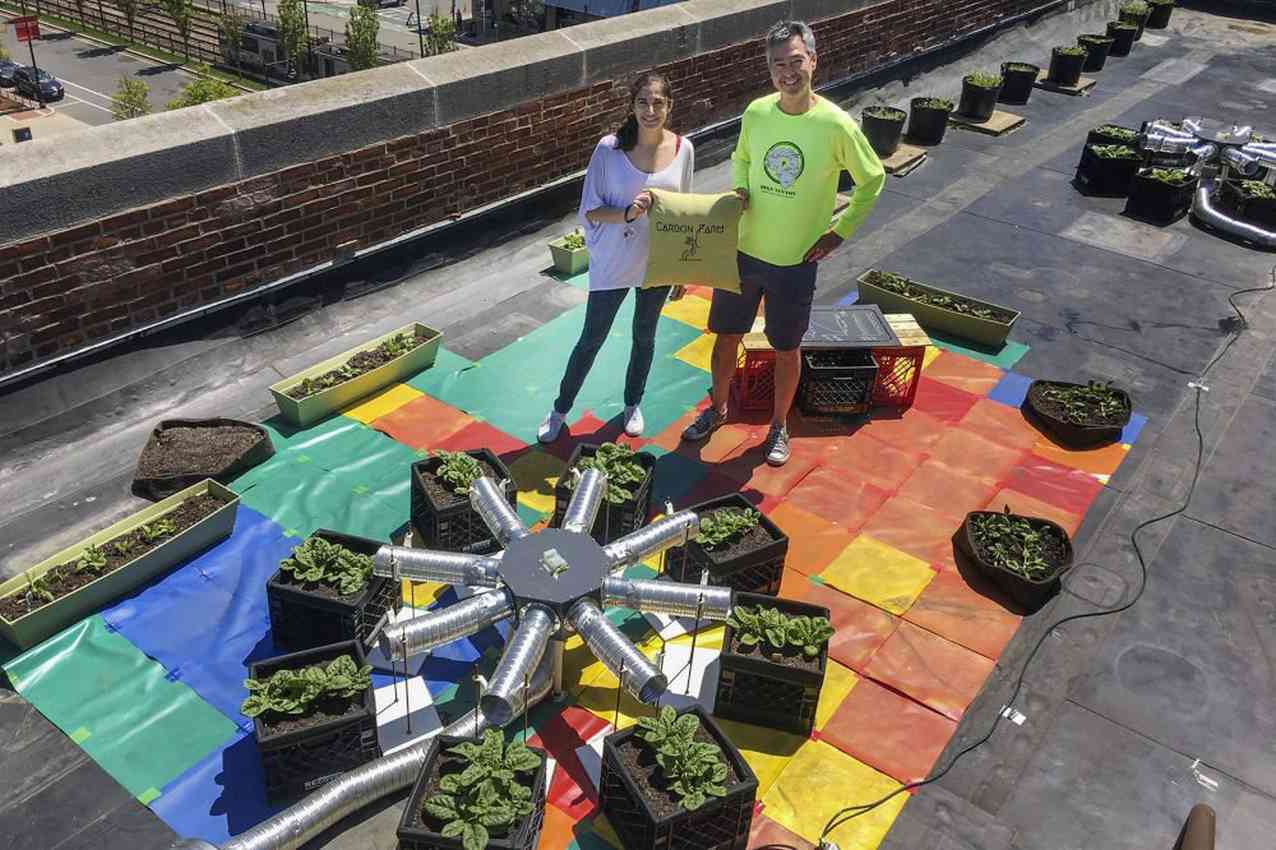
New carbon dioxide ventilators could turn fumes into fertilizer to bring vegetable patches to high rise rooftops, suggests a new study.
It wasn’t just suggested, the study included an experiment that found spinach by the new air vents grew four-times larger than the other plants.
The breakthrough is a promising development for healthier city life, say scientists.
Scientists at Boston University created new technology that turned carbon dioxide (CO2) pumped from building air vents into fertilizer to improve the challenging plant-growing conditions for rooftop plant-life.
Rooftop vegetable gardens—big ones even—can be found in cities around the world, but they’re mostly hydroponic systems, receiving nutrients and water via a special mist channeled through tubes.
Rooftop farms and gardens are often suggested as ways to improve air quality, but conditions are difficult. Plants are often smaller and less healthy because the sites catch more solar radiation, wind exposure, and the soil is less moist.
The researchers decided to intercede by repurposing the CO2 emitted from building exhaust into a fertilizer.
ALSO READ: Rooftop Panels of Tiny Plants Can Cleanse Polluted Air at 100 Times the Rate of a Single Tree
Dr. Sarabeth Buckley, now at the University of Cambridge, began growing corn and spinach on a Boston University campus roof in an experiment named BIG GRO.
“We wanted to test whether there is an untapped resource inside buildings that could be used to make plants grow larger in rooftop farms,” she said. “Creating more favorable conditions that increase growth could help make rooftop farms more successful and therefore more viable options for installation on buildings.”
Dr. Buckley and her team chose corn and spinach because they are common edible plants that are more sensitive to high CO2 levels when they photosynthesize, versus other plants. They then placed the plants near the exhaust vents, and another control group near simple fans.
CO2 levels in the classrooms below were regularly measured to figure out how much extra CO2 the plants were receiving. High concentrations were found both inside classrooms and at rooftop exhaust vents when people were in the building.
“CO2 levels averaged above 1000 parts per million—the recommended limit—in classrooms and above 800ppm—high enough to increase growth in plants—at the rooftop exhaust vents,” said Dr. Buckley.
While growing, plants were monitored for size, number of leaves, and wet and dry biomass after harvesting.
The results were striking: spinach grown beside the exhaust vents had four-times the biomass of spinach grown next to a control fan.
High winds decreased the size advantage in some plants, but they were still twice as large as the controls.
Dr. Buckley cautioned there was still more work to be done before the system can be used.
“There are still many aspects of this system that must be determined before it can be implemented…” she said. “There is a decrease in growth with increased wind speed, so the optimal wind speed would need to be found and incorporated into the system design.”
“We are hoping this could lead to the further development of this system and eventual implementation in rooftop gardens and farms. If that happens, then hopefully more rooftop farms will be installed.”
“They could provide a multitude of environmental and social benefits such as energy savings for the building, carbon drawdown, climate mitigation, urban heat reduction, local food production, community building opportunities, and aesthetic and mental health benefits.”
SHARE This Great Idea On Social Media…




















